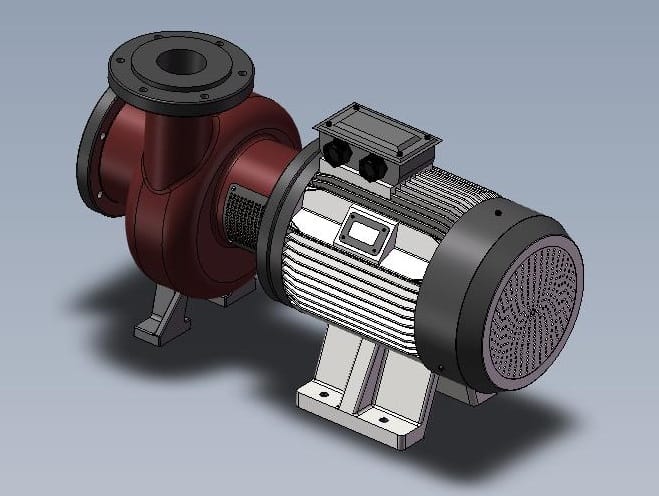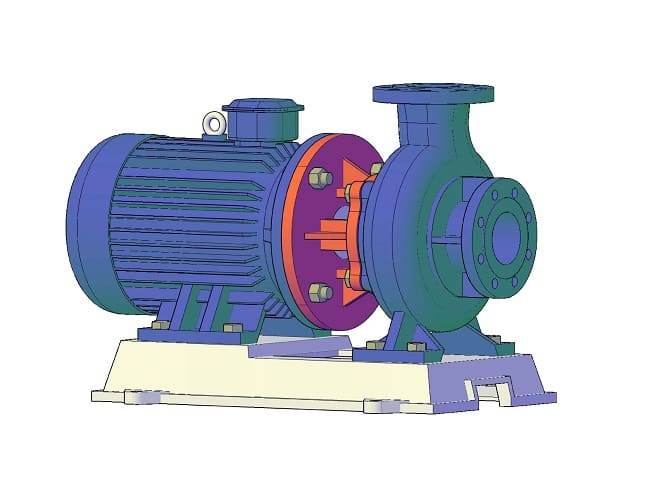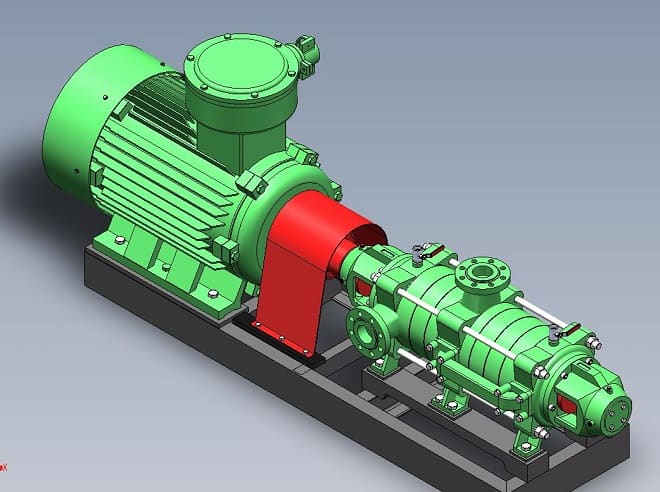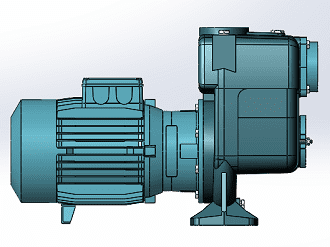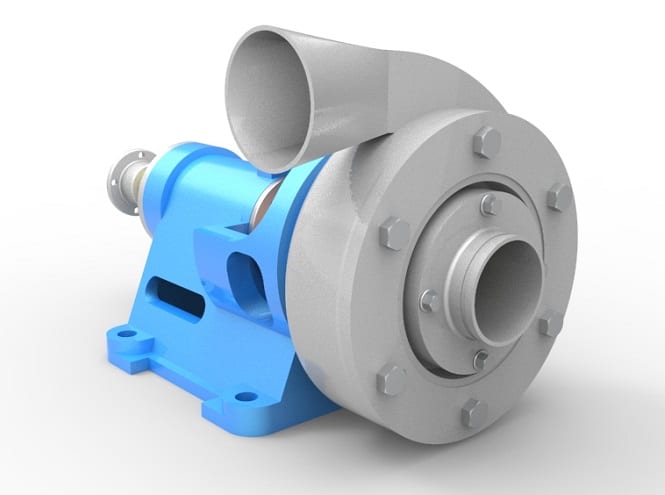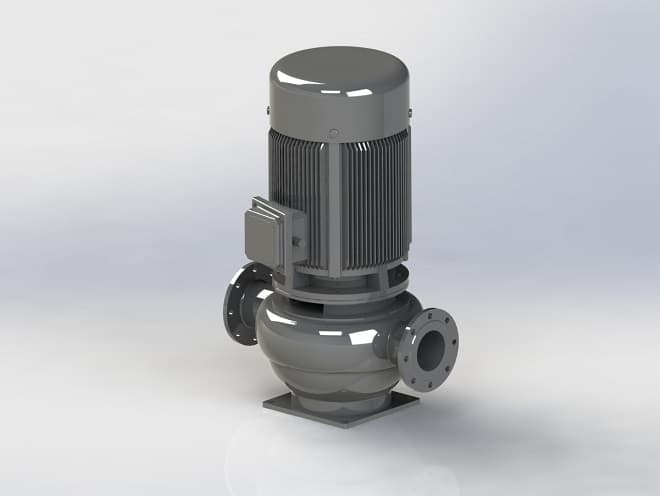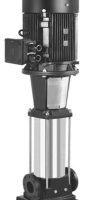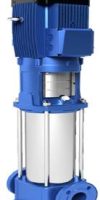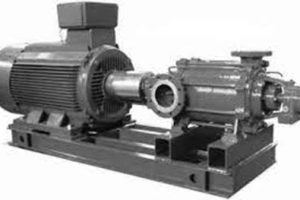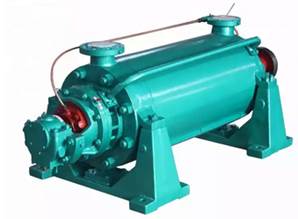Centrifugal Pump
Centrifugal Pump
A pump is a mechanical device that helps to transfer liquid from one point to another. They are used all over the world for domestic as well as industrial uses. Pump manufacturers offer several types of pumps in the market today and a centrifugal pump is one of them. This article covers the centrifugal pump, its working principle, and the various types available on the market today.
REQUEST A QUOTE FOR MORE DETAILS
What is a centrifugal Pump?
Centrifugal pumps are mechanical devices that convert the mechanical energy of an impeller into the pressure energy of a fluid. Typically, an electric motor is coupled to the pump’s shaft to provide the necessary mechanical energy. These pumps fall into the category of dynamic pumps, which increase the kinetic energy of the fluid by raising its flow velocity. As a result, centrifugal pumps generate fluid flow and pressure dynamically by imparting velocity and pressure to the fluid through the impeller.
The first centrifugal pump was invented in the 17th century. The pump then underwent a series of improvements in terms of blade configurations leading to Denis Papin introducing a centrifugal pump with straight blades. In the later century, around 1851, a renowned British discoverer, John Appold, invented a centrifugal pump with curved vanes.
Parts of a centrifugal pump
A centrifugal pump consists of the following main parts: impeller, Volute or casing, shaft, Suction pipe, delivery pipe, and bearings.

Figure 1: The various components of a centrifugal pump
Impeller
The impeller is a rotor that serves the role of increasing the kinetic energy and pressure of the fluid. It is fitted with a series of backward curved vanes. It is usually mounted on the pump shaft and housed in a watertight casing.
Shaft
The shaft is a rotary mechanical component supported on bearings. Its main functions are to carry the impeller. It is usually coupled with the prime mover.
Volute (Casing)
The casing is a narrow air- passage surrounding the impeller. The casing acts as a pressure containment vessel and has suction and discharge ports. It contains the liquid and directs the flow into the pump through the suction pipe and out of the pump through the delivery pipe.
Suction pipe
The suction pipe comprises two ends- one end is connected to the pump inlet while the other dips into the water. The lower end of the suction pipe is fitted with a foot valve to prevent the backward flow of water and a strainer to inhibit foreign bodies from entering the pipe.
Delivery Pipe
Like the suction pipe, the delivery pipe also has two ends with one end connected to the outlet of the pump while the other end delivers the water at a designed height. The main purpose of the suction pipe is to lift fluid to the required area
Bearings
The main purpose of the bearings is to support the shaft or the rotor and to align them correctly with the fixed ends under the action of radial and axial forces. It also helps to contain the relative motion of the rotor and to minimize the friction between the rotating shaft and the stator.
Working Principle of a Centrifugal Pump
This section described the operating principle of a centrifugal pump. The operation of a centrifugal pump is governed by the principle of forced vortex which states that when a mass of fluid rotates due to an applied force, the pressure head of the fluid increases. The resulting increase in pressure head leads to the transfer of the fluid from one point to another. The increase in pressure head is directly proportional to the fluid velocity. Therefore, the pressure head will be higher at the pump outlet hence the fluid will discharge at a higher pressure. The centrifugal force which is equal to the change in angular momentum of the rotor causes the fluid to flow inside the pump casing converting the kinetic speed of the fluid into pressure. The working of centrifugal pump follows the following stages:
- Firstly, the rotor is mechanically powered through the use of an electric motor or engine. The impeller is directly coupled to the electric motor via a shaft and it rotates at the same RPM as the motor.
- When the impeller starts rotating, a vacuum is created inside the eye of the impeller and it causes water to enter the impeller axially.
- Once the water strikes the blades of the impeller, the centrifugal force acting on the blades rotates the water radially and axially outwards until it passes through all of its components and is throng against the pump casing
- At the pump volute, the water is rotated at the same speed as that of the impeller and the kinetic energy of water is converted into a pressure head before the water leaves the casing and enters the delivery pipe.
Centrifugal Pump Types
single-stage centrifugal pump
This is a type of centrifugal pump that consists of one impeller in its casing. Due to its simple design, a single-stage centrifugal pump is very easy to maintain. The pump is best suited for applications involving low fluid pressure and large fluid flow rates.
Multistage centrifugal pump
This type of centrifugal pump has three or more impellers. In this pump, the fluid passes through multiple liquid chambers that are connected in series. The pressure of the fluid increases with each pump stage. When entering the first chamber, the fluid is at the suction pressure and it is at much higher pressure when leaving the chamber. This fluid pressure is raised even further when the fluid enters the second chamber and so on. These types of pumps are highly applicable for high head flow.
Horizontal centrifugal pump
A horizontal centrifugal pump is characterized by a horizontally oriented shaft and impeller, typically between pump bearings. This pump can be easily coupled with a prime mover (turbine, electric motors, or engine). It is also easier to install and maintain. However, it has a limited NPSH (net positive suction head) and low working temperature and pressure. Because of their low headroom, horizontal centrifugal pumps are best applied in indoor applications where the vertical space is limited.
Vertical centrifugal pump
A vertical centrifugal pump consists of a vertically oriented shaft that is radial split and overhang. It has a variable NPSH hence suitable for a wide range of applications. However, vertical centrifugal pumps are difficult to install and maintain because they require a lot of headroom. The overhung shaft also causes challenges at high suction pressure as it becomes challenging to balance the axial thrust.
Cryogenic centrifugal pump
This is a type of centrifugal pump that is used for moving coolants and liquefied industrial gases i.e., liquid argon, liquid oxygen, liquid nitrogen. They form an important component for processes involving pure and mixed industrial gases. The design of a cryogenic centrifugal pump also includes a single-stage pump type comprising a single impeller and a multi-stage pump type comprising several impellers. They are designed for extremely low-temperature operating conditions. Therefore, they are characterized by hermetic seals to reduce heat leakage from the motor. This also helps to prevent contamination of the cryogenic fluid by the process fluid. They are used in such applications as cooling high-temperature superconducting cables or magnets.
Centrifugal mono-block pump
This type of centrifugal pump features an electric motor and a centrifugal pump in a single block constriction hence the name centrifugal Monoblock pump. This pump can work in negative suction i.e., the pump kept above the water level, or in positive suction i.e., the pump kept below the water level but unsubmerged. However, the application of centrifugal monoblock pump in negative suction is limited by the suction lift- a negative pressure gradient that exists between the level of the water surface and the pump’s hydraulic center
Stainless Steel centrifugal pump
These types of centrifugal pumps are made of components constricted from a stainless-steel material. They are widely used in agriculture, domestic and industrial sectors to boost water pressure, filter water, and aerate ponds and fountains. As all the pump components are constructed from stainless-steel material (e.g., SS 304 or 316), the pumps have a very high resistance to corrosion hence suitable for use with clean water, dairy processing, and food and beverage production. In addition, these pumps can also withstand situations that could damage conventional pumps e.g., hard chemicals and environments. Therefore, they can be used to transfer chemicals and to resist damage from acids.
Advantages of a centrifugal pump
Centrifugal pumps offer a myriad of benefits in their industrial applications. These benefits include
- Simplicity in design and easy to control
- Suitable for large discharge and smaller head
- Require minimal maintenance
- Suitable for large quantities of water and large flow rates
- provides steady and consistent output
- Can operate over a wide range of flow rates
- They do not experience leakage problems. This is because they do not contain any drive seals
- There is no chance of heat transfer hence no heat transfer problem.
- They suitable for hazardous fluids
- They are free of external pressure. The presence of magnetic coupling help to prevent the occurrence of external pressure.
- They have excellent operational efficiency
Disadvantages of a centrifugal pump
A Centrifugal pump is not without downsides and below is a highlight of some of the disadvantages of using a centrifugal pump
- The pump may overheat
- May suffer from loss of energy due to magnetic coupling
- An intense load may fail the pump
- The pump is prone to rust, which may potentially cause damage.
Applications of centrifugal pump
Centrifugal pumps are preferred for most fluid transfer activities in various industries. Some of the industries where the centrifugal pumps are most widely applied include agriculture, mining, municipal wastewater plants, petroleum, chemical and petrochemical, energy and oil industries, and many more. The most common uses of centrifugal pumps are as follows:
- Pumping water
- supporting industrial fire protection equipment
- Regulation of hot water
- Residential and industrial water supply
- pressure boosting
- Food and beverage manufacturing
- Disposal of sewage/slurry
- chemical manufacturing
Centrifugal pump troubleshooting
Sometimes faults in the pump system may cause a centrifugal pump to not work properly. The following are some of the manufacture’s guides on how to trace and correct common mechanical problems in a centrifugal pump.
Little or no discharge
- The impeller might be damaged (replace the impeller if damaged)
- The impeller is plugged (clean the impeller).
- Casing not at first filled with water. The solution is to fill up the casing. This process is also known as priming the pump
- The total head is too high. The corrective action is to reduce the suction
- Leakage in the casing gasket. The solution is to replace the gasket
- Pump flow is higher than the well capacity.
- Leakage of air in the suction line (Replace or repair the piping system using pipe sealing compound)
- inlet pressure is insufficient (Add more water to more water to raise inlet pressure)
- The suction or discharge valve is closed (ensure the valves are open).
The pump vibrates and produces excessive noise
- The suction lift is too high (reduce the suction lift)
- the impeller is damaged or worn out (replace the impeller)
- The motor bearings are worn out (replace the bearings)
- presence of foreign material in the pump (disassemble the pump and clean it)
- The mounting plate and the foundation lacks sufficient rigidity (reinforce the foundation, mount the pump tightly)
The pump does not start or run
- Shortcomings in pump wiring i.e., loose connections or broken wiring (Fix any loose connection, replace the broken wire, and ensure the pump wiring satisfies the wiring diagram on the motor)
- Either the circuit breaker is open or the fuse is blown (reset the circuit breaker, replace the fuse)
- the motor is sorted out
- Presence of an open circuit in the thermal overload (let the pump cool, check the reason for overload, and restart the pump)
The pump does not develop pressure
- No priming water in the casing (fill pump casing)
- leakage in the mechanical seals (replace seals)
- The discharge line is closed and priming air can’t find the way out (open the discharge line)
- leakage in foot valve or check valve (replace the valves)
Pump leakage at the shaft
- The mechanical seals are worn out (replace the seals)
Motor overheats and shuts off
- mismatch of the motor voltage and the line supply voltage (check the motor supply voltage against the voltage specification on the nameplate)
- Collision between the impeller and the pump casing or the impeller lacks a free rotation (dismantle the pump, align the impeller or replace it)
- Use of improper wire size (use the national electrical codes for an accurate guide on wire sizes and circuit protection devices)
Loss of suction
- Defective priming hose pipe
- Too high suction lift (lower the suction lift)
- The strainer, foot, and check valves are clogged (unclog)
- The suction head or inlet pressure is insufficient (increase the backpressure or the inlet pressure by adding more water into the tank)
- worn-out foot valve or check valve
Summary
A centrifugal pump is a common type of pump for the transfer of fluids. It converts the mechanical energy of an impeller into the pressure energy of the fluid. Centrifugal pumps are classified under dynamic pump types. These are pumps where the kinetic energy of a fluid is increased by increasing the flow velocity. There are many types of centrifugal pumps including single-stage, multi-stage, horizontal, and vertical centrifugal pumps, and many more. The main parts of a centrifugal pump include impeller, casing, suction pipe, and delivery pipes. Centrifugal pumps work based on the principle of the forced vortex where an increased fluid kinetic energy due to applied forces increases from the pressure head of the fluid. A centrifugal pump is the most considered type of pump for both residential homes and industrial uses. The common applications of centrifugal pumps include pumping water, supporting industrial fire protection equipment, regulating hot water, pressure boosting, sewage/slurry disposal, Food, and beverage manufacturing, chemical manufacturing.
Centrifugal pumps offer many benefits in their domestic and industrial uses including a simple and compact design, minimal maintenance need, steady and consistent output, ability to operate over a wide range of flow rates, large discharge with a smaller head, excellent operational efficiency. However, they also have various disadvantages including overheating, loss of energy due to magnetic coupling, and the occurrence of failure due to intense load. For the routine operation of centrifugal pumps, some Knowledge of pump troubleshooting is required. This paper has guided on how to identify and solve Several pump operational challenges including the pump giving out little no discharging at all, pump vibrating and producing excessive noise, pump motor overheating and shutting off, and more.

